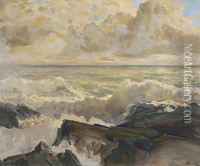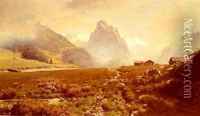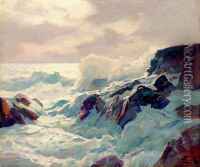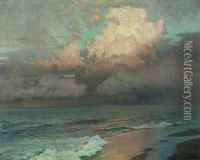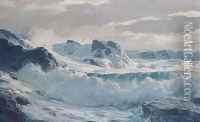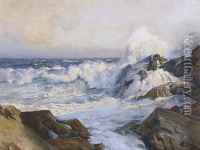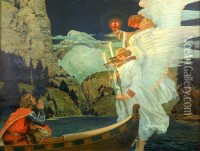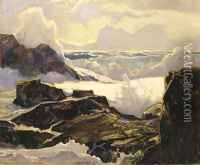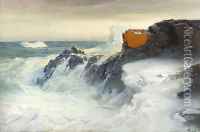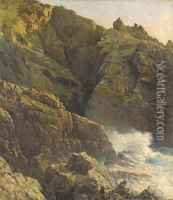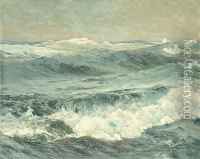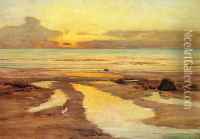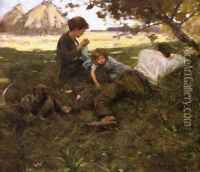Frederick Judd Waugh Paintings
Frederick Judd Waugh was an American artist known primarily for his marine paintings. Born on September 13, 1861, in Bordentown, New Jersey, Waugh was the son of Samuel Bell Waugh, a notable portrait painter. This artistic environment helped cultivate his interest in painting from a young age. He began his formal training at the Pennsylvania Academy of the Fine Arts in Philadelphia and later studied at the Académie Julian in Paris under Adolphe William Bouguereau and Tony Robert-Fleury.
In his early career, Waugh earned a living by providing illustrations for magazines such as 'Harper's' and 'Scribner's'. His early works were more diverse in subject matter, but he developed a profound affinity for the sea after moving to the island of Sark in the English Channel. The rugged coastlines and the dynamic character of the ocean became his lifelong subjects. Waugh's marine paintings are noted for their realistic depiction of the sea's many moods, often capturing the crash of waves with energetic brushwork and a profound understanding of light and color.
By 1908, Waugh had moved back to the United States, settling along the coast of Maine. The majestic coastline of New England provided endless inspiration for his works. Throughout his career, Waugh exhibited at various institutions, including the National Academy of Design and the Art Institute of Chicago. His paintings were well received, and he garnered considerable success during his lifetime.
Waugh's technique involved a unique approach to capturing the movement and translucency of water, often working with a palette knife and thick applications of paint. His work displayed a command of both the tumultuous and serene moments of the ocean, a testament to his close observation and experience with his subject.
Frederick Judd Waugh passed away on December 10, 1940, in Provincetown, Massachusetts. His legacy lives on through his contribution to American marine painting, and his works are held in numerous collections, including the Metropolitan Museum of Art in New York and the Smithsonian American Art Museum in Washington, D.C.

